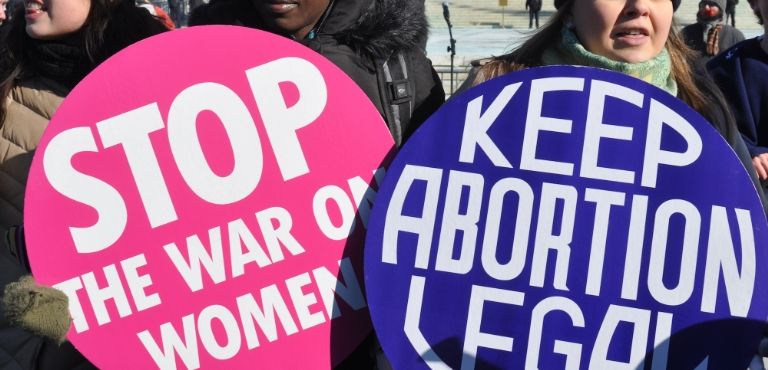One of President Trump’s very first actions as President was to re-instate The Global Gag Rule. What is the Global Gag Rule, what is its history, and what does it mean for women worldwide?
What is the Global Gag Rule?
Broadly, the Global Gag Rule (also known as the Mexico City Policy, because of where it was first announced) means that foreign non-governmental organizations (NGOs) receiving U.S. family planning funding cannot provide abortion services, referrals, or information about abortion, and cannot advocate for safe abortion access. In layman’s terms, what that means is that if the U.S. offers money to an NGO which provides contraceptives or sex ed, for example, that NGO is not allowed to even mention abortion to its clients—or risk losing U.S. financial support altogether. This is why the rule is referred to as the “Global Gag Rule”—because of the terms of silence imposed upon global health practitioners.
What Is The History of The Global Gag Rule?
President Ronald Reagan first introduced the policy in 1984, carving out exceptions for cases of rape, incest, and the life of the mother. Ever since, the GGR has been controversial. Democratic presidents have tended to suspend the GGR early in their presidencies; Republican then re-instate it early in their own administrations. In fact, the GGR is so contentious that dealing with it is consistently among the first things incoming Presidents do. Bill Clinton rescinded the policy in January 1993; George W. Bush re-instated it in January 2001; Barack Obama rescinded it in January of 2009; and most recently, President Donald Trump re-instated it in January of this year.
But President Trump’s policy actually goes further than some past Republican policies. Under President Trump’s policy, the GGR is a condition of any health assistance, including funds for HIV and maternal and child mortality—not only family planning assistance, as has been true in the past. This means that someone who found out they were pregnant while receiving HIV treatment couldn’t get an abortion referral, or even information about abortion as one of their options. The U.S. would rather deny life-saving funds to AIDS patients and new mothers than allow them basic, factual information about abortion.
What Does the Global Gag Rule Mean for Women Worldwide?
Opponents of the Global Gag Rule argue that the policy restricts health workers’ rights to speech and patients’ rights to make informed health care decisions. Perhaps unsurprisingly, analyses show that the Global Gag Rule is associated with greater obstacles to attaining family planning services, resulting in worse health outcomes among poor women. And, as is often the case with restrictive reproductive policies, the Global Gag Rule does not actually reduce abortion.
What Are Global Organizations Doing to Help?
As bleak as all this sounds, there are plenty of efforts being made to help those impacted by the Global Gag Rule’s restrictions. In the wake of the new Administration’s re-instatement of the rule, The Netherlands has announced plans for an international safe abortion fund to help mitigate the funding gap for affected organizations. There are also organizations like Women on Web, which seek to make accurate abortion information available to women everywhere—no matter where they live in the world, or how the Global Gag Rule affects them.



